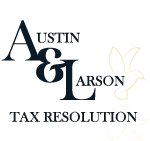Tax season can be a stressful time for small business owners, as there are many things to consider. If your business hasn’t made any money yet, you might wonder whether you even need to file your taxes for the year. On the other hand, if your business is already turning a profit, you may be curious about how much you can earn before the IRS requires you to start paying taxes on your business income.
The answers to these questions depend on a few important factors, such as your business structure, how much money your business has made, and the available deductions or credits that may reduce your taxable income. Understanding these key details will help you figure out your tax obligations.
In the sections below, we’ll break everything down for you so that you can better understand how much you might owe in taxes for any business income you’ve earned in 2024. We’ll also cover some tips on what you can do to minimize your tax burden.

How to Determine Your Small Business’ Taxable Income
Tax obligations for your small business depend on how your business is structured and how much money it generates. Knowing how your business is set up is vital in understanding when you need to start paying taxes and how much you’ll owe.
Corporate Businesses
For small businesses structured as C corporations, a flat 21% tax rate applies under the Tax Cuts and Jobs Act. This means there is no minimum income requirement before you start paying taxes. Every dollar your corporation earns (after accounting for deductions and credits) will be taxed at 21%.
LLCs that opt to be taxed as corporations also fall under this same corporate tax rate, so it’s important to keep this in mind when setting up your tax plan.
Pass-Through Entities
If your business is a sole proprietorship, partnership, LLC, or S corporation, it is generally considered a “pass-through” entity. In this case, your business income is transferred to your personal income tax return, and the tax responsibility is yours individually.
This income is then added to any other personal income you may have, like wages, rental income, or investment earnings. Your total income, combined with your filing status, applicable deductions, and exemptions, will help determine your taxable income and tax rate.
A tax professional can guide you through these calculations and help you estimate your business’s tax obligations based on your earnings. Below is a breakdown of the 2024 tax brackets for pass-through income, so you can get an idea of where your business income will fall in terms of taxation:
- 10%: Up to $11,600 for single filers, up to $23,200 for joint filers
- 12%: $11,601 to $47,150 for single filers, $23,201 to $94,300 for joint filers
- 22%: $47,151 to $100,525 for single filers, $94,301 to $201,050 for joint filers
- 24%: $100,526 to $191,950 for single filers, $201,051 to $383,900 for joint filers
- 32%: $191,951 to $243,725 for single filers, $191,951 to $243,725 for joint filers
- 35%: $243,726 to $609,350 for single filers, $487,451 to $731,200 for joint filers
- 37%: Over $609,350 for single filers, over $731,200 for joint filers
Knowing where your income falls within these brackets helps you plan ahead for how much tax you’ll owe, making it easier to manage your business’s finances.

How Much Does a Small Business Need to Earn Before Paying Taxes?
If your business operates as a pass-through entity, where the income is taxed as part of your personal income, there are specific tax-free thresholds to keep in mind. For 2024, the standard deduction is $14,600 for individuals and $29,200 for married couples filing jointly. If your total income, including business profits, falls below these amounts, you might not owe taxes.
For corporations, however, there is no tax-free threshold. Every dollar your business earns is subject to tax. Additionally, small business loans are not treated as taxable income, so they don’t factor into your earnings when calculating your tax responsibilities.
No Taxable Income: What It Means for Your Small Business
If your business generates no profits or if your annual income and business expenses balance out, you may not have any income tax obligations.
For example, let’s say you launch a small business in 2024 that brings in $8,000 in sales. However, your expenses for the year — such as purchasing a new computer, advertising costs, and office supplies — total $8,000. Since your income and expenses are equal, no taxable income remains, and therefore, you won’t owe any income tax. This scenario demonstrates how your business’s financial situation can result in zero tax liability if earnings and expenses offset each other.
Net Income Formula for Your Small Business
Net income, also known as net earnings or net profit, represents your business’s total profits after subtracting all business expenses. It’s the amount remaining after accounting for all costs, and it’s used to determine how much tax you owe based on your earnings.
To calculate your net income, you can use this simple formula:
Gross Income – Expenses = Net Income
For example, if your business generated $85,000 in annual sales and your total expenses amounted to $22,000, your net income would be:
85,000 – 22,000 = $63,000
Keeping track of your business expenses is essential for lowering your net income, which helps reduce your tax liability. Business expenses may include things like home office costs, equipment and supplies, vehicle-related expenses, advertising, or even legal and accounting fees.
Net income can either be positive or negative. A positive net income means your business earned more than it spent, while a negative net income, also known as a net loss, indicates your expenses exceeded your income. If you experience a net loss, you won’t be required to pay taxes on your business income, as there’s no taxable profit to report.
Self-Employment Tax
If your business isn’t incorporated, you’ll likely need to file a tax return and pay self-employment tax if your net income exceeds $400. This rule applies to self-employed individuals such as sole proprietors, freelancers, and independent contractors.
Self-employment tax is similar to the FICA payroll taxes that employees pay for Social Security and Medicare. When you’re employed by someone else, you and your employer each contribute half of these taxes. However, if you own a pass-through small business, you act as both the employer and the employee. This means you are responsible for paying both portions of these taxes on your own.
It’s important to stay on top of self-employment tax requirements because they can significantly affect your total tax liability. Make sure to account for this obligation when planning your finances, as it impacts both the amount of tax you owe and the amount you need to save for your payments.
Qualified Business Income (QBI) Deduction for Small Business Owners
In addition to the standard small business tax deductions available to you, the IRS offers a special benefit for owners of pass-through businesses through the Qualified Business Income (QBI) deduction. This deduction allows business owners to reduce their taxable income by up to 20% of their qualified business income, helping lower their overall tax liability.
It’s important to note that this deduction applies to businesses structured as sole proprietorships, S corporations, and partnerships. However, after 2025, these business types may no longer be eligible for the QBI deduction unless Congress decides to extend Section 199A of the federal tax code.
Taking advantage of the QBI deduction can provide significant tax savings for eligible small business owners, so it’s crucial to stay informed about any potential changes to the law that could affect this benefit. If you qualify, this deduction can make a noticeable difference in your tax bill and is something to consider when planning your taxes.
Maximizing Tax Credits for Your Small Business
An important strategy for reducing your business tax liability is to explore any tax credits you may be eligible for. Unlike tax deductions, which reduce the amount of income subject to tax, tax credits directly reduce the amount of taxes you owe, dollar for dollar. This makes tax credits generally more valuable than deductions when it comes to lowering your tax burden.
There are a variety of tax credits available to small businesses, depending on the activities or benefits your business provides. For example, businesses may qualify for credits if they offer employees paid family and medical leave or if they take steps to increase accessibility for people with disabilities. To claim these tax credits, you’ll need to complete the proper forms corresponding to the specific credits your business qualifies for.
In addition to business tax credits, it’s also important to review any personal tax credits you may be eligible for, especially if you file as a pass-through business. For example, credits like the Child Tax Credit can further reduce your overall tax liability, helping you save even more. By being aware of the credits available to you, you can maximize your savings and ensure you’re making the most of your tax filings.

Filing Income Taxes With a “Doing Business As” (DBA) Name: A Step-by-Step Guide
When you start a business, you may want to use a different name than your legal business name. This is known as a “Doing Business As” (DBA) name, or sometimes a fictitious business name. If you choose to operate under a DBA, you’ll need to register it with the appropriate city or state authority, depending on where your business is located.
When it comes time to file your taxes, you will need to include both your legal business name and your DBA on your tax forms. For instance, if you’re filing as a sole proprietor using Schedule C, you will need to provide your personal legal name, Social Security number, your DBA (if applicable), and your Employer Identification Number (EIN) if you have one.
Properly registering and using your DBA not only makes your business name official but also helps ensure that your tax filings are accurate and compliant with local regulations. Be sure to follow the necessary steps for DBA registration in your jurisdiction to avoid any legal or tax issues down the road.

Consequences of Failing to File Your Corporate Tax Return on Time
Regardless of how your small business is structured, it’s essential to file your corporate tax return by the deadline to avoid penalties. If you fail to submit your return on time, the IRS may impose a penalty fee. Typically, this penalty is 5% of the taxes owed for every month, or part of a month, that your tax return is late. However, the penalty will not exceed 25% of the total taxes you failed to pay.
In addition to penalties, the IRS may also apply interest to the amount owed, which will continue to grow until the full balance is paid off. The combination of penalties and interest can significantly increase your tax liability, making it important to file your returns on time. If you’re struggling to meet the deadline, it’s better to file for an extension than to risk these costly penalties.

5 Valuable Tax Breaks for Small Businesses to Take Advantage Of
As a small business owner, you may qualify for several tax breaks that can help reduce your tax liability. Here are five to explore:
- Deduction for Business Loan Interest
If your business has taken out loans, including lines of credit, mortgages on business property, or used business credit cards, you may be eligible to deduct the interest you pay on these loans. This tax break can help reduce your taxable income, so be sure to track and report these interest payments when filing your taxes. - Charitable Contribution Deductions
Small business owners who donate to qualified charitable organizations may be eligible for tax deductions. To claim this deduction, the donation must be made to an IRS-recognized charity, and you should not have received anything in return for the gift. Charitable contributions can be a win-win for both your community and your bottom line. - Cell Phone Expense Deduction
If you use your cell phone for business-related tasks, you may qualify to deduct a portion of your phone expenses. This includes the cost of calls, texts, and data used for work purposes. Make sure to keep detailed records of your business phone usage to claim this deduction. - Tax Deduction for Business Travel
Business travel costs can be expensive, but the IRS allows small business owners to deduct eligible travel expenses. This can include transportation costs like flights, rental cars, train fares, parking fees, and tolls. Ensure that your travel is business-related to qualify for these deductions. - Advertising and Marketing Expense Deductions
The costs associated with promoting your business, whether it’s through online ads, print media, or event sponsorships, are often deductible. This includes expenses related to your business’s website optimization, promotional materials, and any paid marketing campaigns. Keep all receipts and documentation to maximize your deductions in this area.
By understanding and utilizing these tax breaks, you can significantly reduce your tax burden while helping your business grow. Always consult with a tax professional to ensure you’re maximizing your deductions and remaining compliant with tax laws.
Conclusion
For small business owners, understanding your tax obligations is crucial for staying compliant and avoiding any surprises during tax season. Whether your business is structured as a pass-through entity or a corporation, knowing how much you need to earn before paying taxes depends on various factors like your income, business expenses, and applicable deductions. While small businesses may not have a minimum income requirement for tax payments, it’s essential to keep accurate records of your earnings and expenses to avoid overpaying or missing potential savings.
A great way to reduce your tax burden is by taking advantage of credits and deductions that apply to your specific business type, such as the Qualified Business Income (QBI) deduction or business loan interest deductions. Maximizing these opportunities can help you keep more of your hard-earned money.
If you’re unsure about where your business stands with taxes or need help navigating complex tax laws, it’s a smart idea to consult with professionals who can help you manage your obligations. Tax resolution services can provide valuable insight and support in reducing your tax liabilities.
At Austin & Larson Tax Resolution, we specialize in helping small businesses navigate their tax responsibilities and reduce tax burdens. Our experienced team can work with you to ensure you’re compliant and making the most of available deductions and credits. Reach out to us today to get the assistance you need!
FAQs
How much can a small business make before paying taxes?
The tax requirement depends on your business structure. For corporations, there is no minimum threshold; all income is taxable. For pass-through entities, your personal income, including business profits, determines your tax obligation.
What is the self-employment tax for small businesses?
If you’re a sole proprietor or freelancer and your net income exceeds $400, you will need to pay self-employment tax. This covers Social Security and Medicare contributions.
Can I deduct business loan interest from my taxes?
Yes, interest on business loans, including credit lines or mortgages, is deductible, reducing your taxable income.
How does the Qualified Business Income (QBI) deduction work?
The QBI deduction allows eligible small business owners to deduct up to 20% of their qualified business income, reducing your overall tax liability.
What happens if I miss the tax filing deadline for my business?
Missing the deadline can result in penalties and interest on the amount owed. It’s better to file for an extension than face hefty fees.


Recent Comments